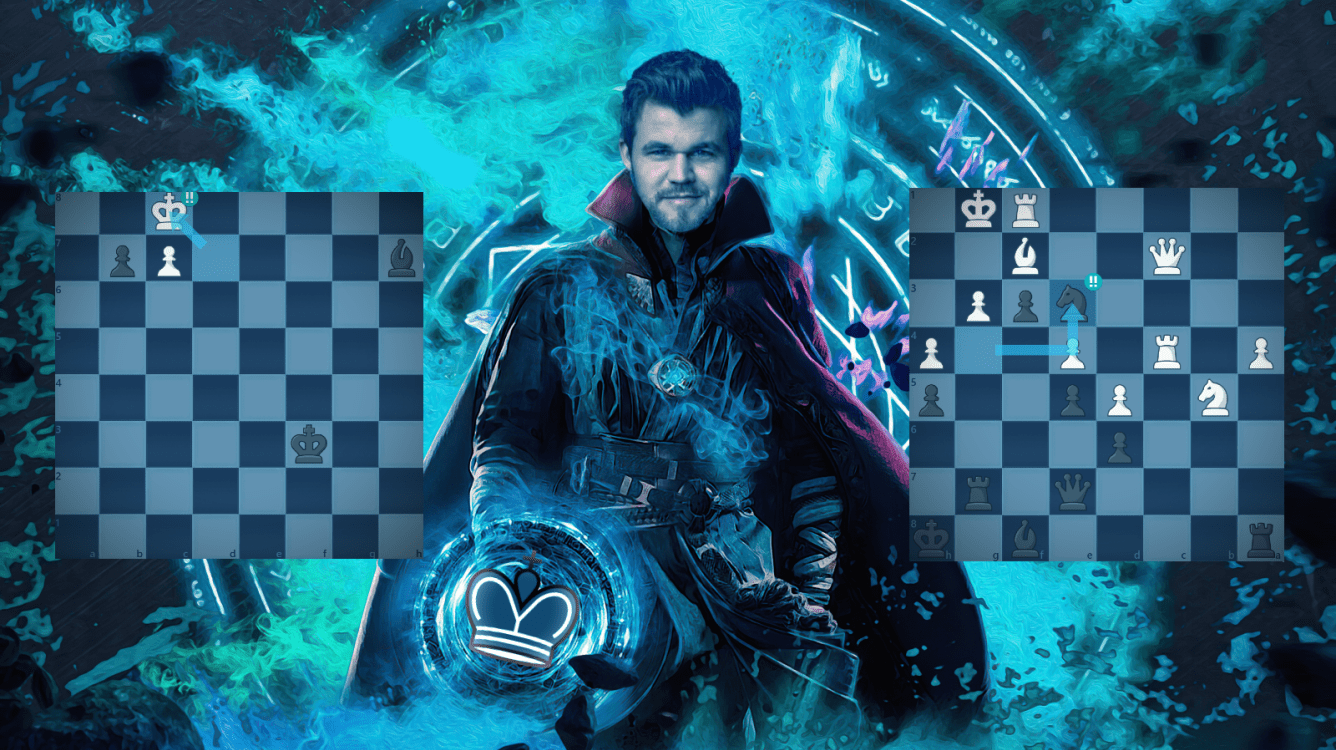
The Ten Commandments of Attack
When we imagine the excitement of chess, what do we imagine? If you think of the positional aspect, then... you're an interesting chess player. But most people see brilliant attacks, breaking into the opponent's position! Unfortunately, however much we try to execute an attack like this, it is easier said than done.
Or... is it?
In this blog, I'll show you ten rules of thumb you must follow in your hunt for the king. I've made posts on how to attack an uncastled and a castled king, but most of these rules will apply to any attack. Anyway, let's begin the ten commandments... of attack.
1. Have a Lead
Many of us can't get enough adrenaline in our chess games, so we just decide to kick things up a notch. But sometimes, we need to hold ourselves back from the enemy king. Don't attack the opponent's king unless you have some sort of advantage. You need a reason for an assault other than personal enjoyment, or else you are in for a lot of failures. A few advantages that could help are:
- More pieces (though you may just want to simplify)
- More active/developed pieces
- More pieces on the kingside
- More space on the kingside
- Opponent's weak kingside pawn structure
- Opponent's weak king
Below is a game where GM Luis Paulo Supi converted his advantage into a win against a formidable opponent. This game was Chess.com's Immortal Game of 2021!
2. Castle on Opposite Sides
Let's say both sides are quietly developing in the opening. You notice you have an advantage, like one of the ones above, and you're ready for attack. So, what do you do first? Well, when you are ready to attack, castle the opposite way as your opponent. Why? Because this will allow you to push the pawns towards the opposing monarch without exposing your own! Opposite side castling is a good step in starting an attack, so if you see a well rated player doing this, take it as a declaration of war.
3. Control the Center
When you are conducting an attack on the opposing king, you don't just want the land around that area. While attacking a king, also aim to control the center. The four middle squares are also a valuable commodity to have, as you can make a breakthrough in the middle. Our beautiful CEO from Dubai showcases this excellently against the aggressive grandmaster Veselin Topalov.
4. Use All Your Pieces
Now, let's get into the actual attack. Think about a big army attacking a small army. Unless the small army's general is brilliant, the big army will win. Simple? Absolutely. When you are attacking your opponent, bring as many pieces into the action as possible. The more the merrier. Pawns, bishops, knights, rooks, queens; whatever can enter must enter! Well, not the king...
5. Attack Specific Weaknesses
Now that you have pieces, what do you do with them? How can they help? You need a spot to aim them at. During an attack, look for a weak spot that you can fire at. Mindlessly throwing pieces at your opponent's king won't work (at least, most of the time), so you have to plan it out, channel your power at a specific point. Below, bear down on the targeted square to destroy my opponent.
6. Remove Key Defenders
When you're using your pieces to attack the weakness, there will probably be some of there pieces protecting this weakness, or just protecting the king in general. So what do you do? To increase your attacking chances, try to trade your least active attackers for their most active defenders. This is basic logic; trade your worst players for their best players. Trading pieces helps you break through and sometimes even win material, similar to the common tactical theme "removing the defender":
7. Use Momentum
Chess is not a one player game. However, forcing moves, especially a long string of them, can allow you to basically control the entire game! When possible, string together captures, threats, and checks to continue your attack. Attacks are a landslide if your opponent cannot do anything but respond to your moves! However, don't play hope chess—make sure every move has a purpose other than just making your opponent respond. The magician from Riga shows this brilliantly:
8. Don't Defend, Attack
The best defense is a good offense. — Vince Lombardi, American Football Coach
Although the following quote is meant for football, it applies even better to chess! Often, when your opponent is bearing the brunt of an attack, they will refuse to bow and attack you instead. So, do you put an end to your rage to protect your king, or continue your assault in the face of theirs? When you are attacking at the same time as your opponent, focus on continuing your attack. In some positions, defending may be the only way to stop your own annihilation, but when you start defending, it's hard to switch sides. Following this methodology will result in double-edged, dangerous games, so be careful!
9. Look for Tactics
As we can see from the game above, attacking games can be pretty sharp (even if the players aren't...). If you are an attacking player, keep a keen eye out for tactics. If you are in a decently long time control, check the board every move of your attack for combinations. These are the tactics that can make your aggressive play worthwhile by winning the game! If you attack a lot, then do a lot of puzzles outside of play. Here are some tactics from attacking games:
10. Don't Be Afraid. Sacrifice.
Every player's best dream. Every player's worst nightmare. A position that calls for sacrifice. Chess players admire beautiful sacrifices made by chess grandmasters, but when one of their own games calls for one, some won't step up to the plate. When your position calls for a sacrifice, you must sacrifice. Abandoning one of your knights or bishops, or the exchange, can often be the fuel your other pieces need to take over. Sacrifices are frequently called for in strong attacks.
However, not every exciting game needs a sacrifice. Sacrifice to meet the board's needs, not your own wants. Some of us may be braver than others, but that does not mean we can afford to be foolhardy. Remember the first commandment: Only be aggressive when you have a definitive edge as compensation. Sacrifice when you believe the position needs it—even if it goes wrong.
In those instances, you have to dust off your ego, analyze what went wrong, and give it another try if the board begs you to do so. — IM Jeremy Silman
That ends the blog! Attacks can be difficult for some, and easy for others; either way, following these tips will grant you more consistent victories. In fact, on the defense, you now know what to look out for! Have a great day—destroying the enemy king.


